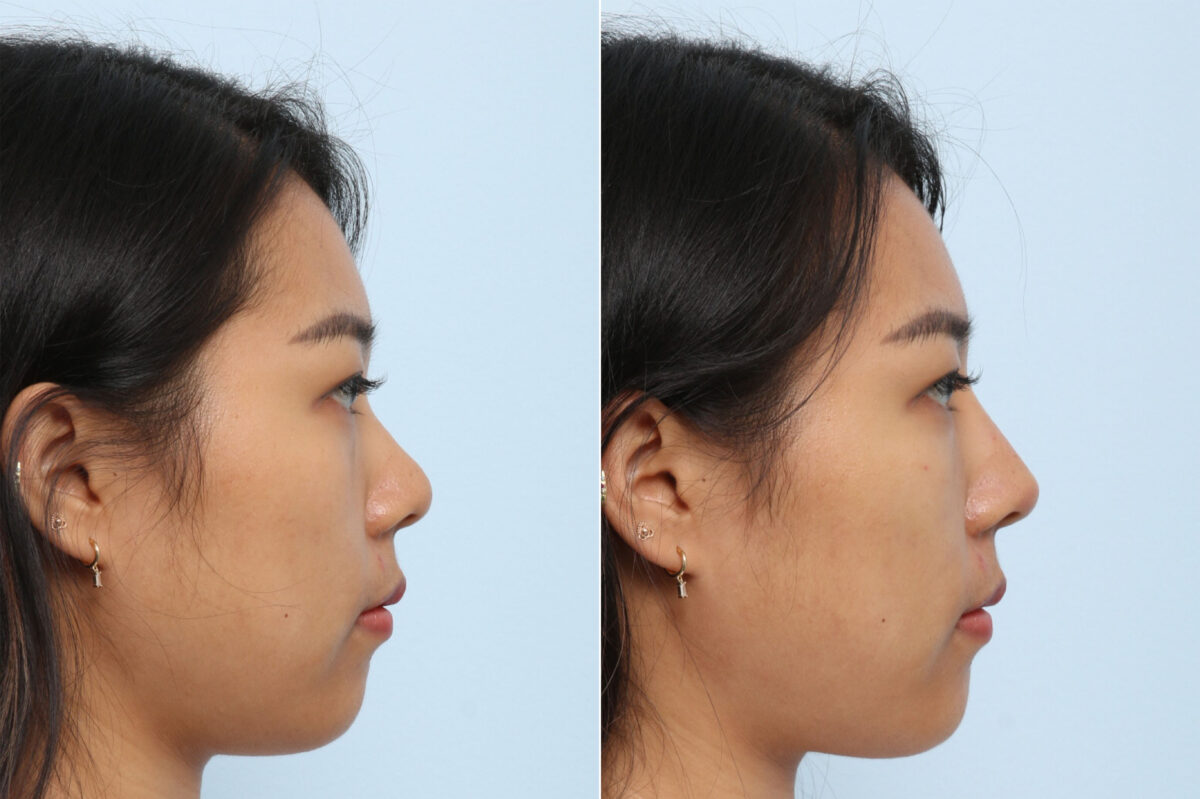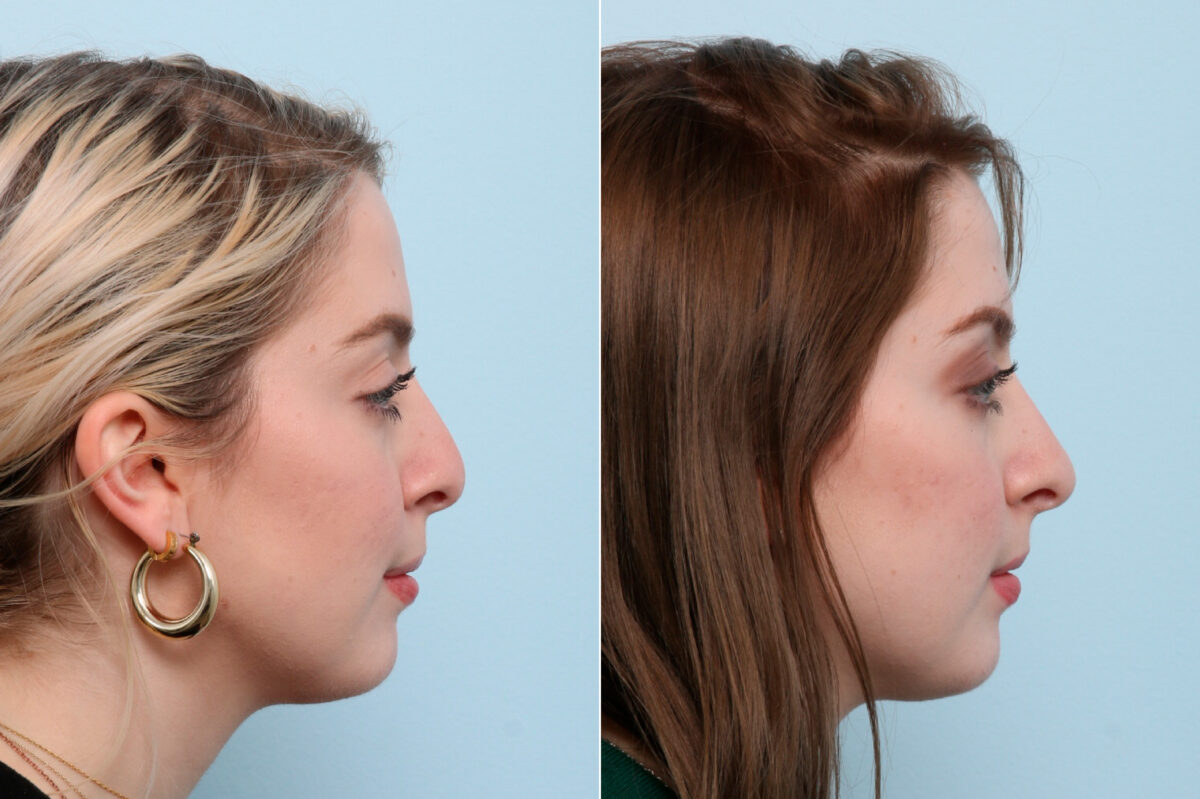The desire for an aesthetically pleasing and well-proportioned nose is not uncommon. However, many people may hesitate to undergo surgical rhinoplasty due to its invasive nature, recovery time, and potential complications. Fortunately, non-surgical rhinoplasty offers a minimally invasive alternative to surgery for those looking to enhance the shape of their nose.

Understanding Non-Surgical Rhinoplasty
Also known as liquid rhinoplasty, non-surgical rhinoplasty is a cosmetic procedure that temporarily alters the shape of the nose using dermal fillers. This treatment can address a variety of concerns, such as smoothing humps, straightening a crooked nose, improving definition, adding fullness and shape, lifting and highlighting a small nasal tip, and disguising a misshapen or bulbous nasal tip. Unlike surgical rhinoplasty, this procedure does not require incisions, anesthesia, or a lengthy recovery period.
The Role of Dermal Fillers in Reshaping the Nose
While traditional rhinoplasty involves surgical intervention, non-surgical rhinoplasty uses dermal fillers. By injecting these soft tissue fillers beneath the skin, volume and fullness are added to the nasal tissues, resulting in the reshaping of the nose. The treatment can improve the appearance of a nose that is misshapen due to genetics, trauma, or from previous rhinoplasty surgery. The results of non-surgical rhinoplasty typically last from three months to over a year, depending on the type of filler used.
Ideal Candidates for Non-Surgical Nose Job
An ideal candidate for a non-surgical rhinoplasty should have a clear understanding of the dermal filler treatment process, be in overall good health, and possess realistic expectations regarding their final results. This procedure is suitable for those who desire minor changes to their nose’s appearance or want to preview how certain modifications may look before committing to a permanent change through rhinoplasty surgery. However, it is important to note that non-surgical rhinoplasty cannot make the nose smaller or improve its function.
The Non-Surgical Rhinoplasty Procedure
The non-surgical rhinoplasty procedure is an in-office procedure and typically takes less than 30 minutes to complete. This treatment is characterized by a series of injections with a hyaluronic acid dermal filler to straighten and highlight the nose’s shape, improve the contour of the nasal bridge, and lift and project the nasal tip.
What to Expect During the Treatment
During the non-surgical rhinoplasty treatment, the provider will carefully assess the patient’s nose and facial features to determine the appropriate injection sites and filler amount. The injections are administered using a fine needle or cannula, and the provider may gently massage the area to ensure the even distribution of the filler. The treatment is well-tolerated, with patients reporting feeling pressure or pinching with each injection. The injections come premixed with a local anesthetic, and a topical anesthetic is also used to minimize discomfort.
Comparing Non-Surgical and Surgical Rhinoplasty
Non-surgical and surgical rhinoplasty differ in several key aspects, including the procedure itself, recovery time, and results.
Key Differences in Results and Recovery Time
Non-surgical rhinoplasty offers immediate results with little to no downtime, whereas surgical rhinoplasty requires a recovery period of several weeks to months. The results of non-surgical rhinoplasty are temporary and will require repeated treatment to maintain. On the other hand, surgical rhinoplasty can provide permanent results with a single procedure.
Additionally, surgical rhinoplasty is a more invasive procedure that involves incisions and anesthesia, whereas non-surgical rhinoplasty is minimally invasive, as it is an effective treatment without the risks that are associated with general anesthesia.
Potential Side Effects and Risks of Non-Surgical Nose Job
While non-surgical rhinoplasty is generally considered safe, there are potential side effects and risks associated with the procedure. Common side effects include mild swelling, redness, and tenderness at the injection site, which usually fades within a day or two. Though rare, more serious complications such as infection or vascular compromise can occur.
It is important to choose a qualified and experienced provider to minimize the risk of complications and ensure optimal results from your non-surgical rhinoplasty treatment.
The Longevity of Non-Surgical Rhinoplasty Results
As mentioned earlier, the results of non-surgical rhinoplasty are temporary. Results may last from nine months to over a year, depending on the type of dermal filler used. The patient’s age, metabolism, and lifestyle can also affect the longevity of the results.
Repeating the Treatment for Maintained Results
Since the benefits of dermal fillers are temporary, patients can safely repeat the liquid rhinoplasty procedure once the effects begin to fade. This allows for continuous improvement and maintenance of the desired nose shape and appearance.
Cost of Non-Surgical Rhinoplasty
Depending on the dermal filler(s) used, the required extent of correction, and the provider’s expertise, the cost of non-surgical rhinoplasty will vary. A customized treatment plan will be determined at a consultation, and that will determine the final cost.
Choosing the Right Provider for Your Non-Surgical Nose Job
Selecting the right provider for your non-surgical rhinoplasty is crucial for achieving the desired results and minimizing potential risks. Dr. Paul Vitenas is a prominent board-certified plastic surgeon in Houston, Texas, with over 30 years of cosmetic surgery experience. He has expertise in injectable fillers and a proven track record of performing successful non-surgical rhinoplasty.
Importance of Board-Certified Plastic Surgeons
When selecting a provider for your non-surgical rhinoplasty, make sure to choose a board-certified plastic surgeon so that there is a deep understanding of facial anatomy. Board certification ensures that the provider has undergone rigorous training and adheres to the highest patient care and safety standards.
An experienced plastic surgeon will be able to assess your unique facial features and create a customized treatment plan to achieve the most natural-looking and harmonious results.
Preparing for Your Non-Surgical Rhinoplasty Consultation
Before your initial consultation, do your research and gather any questions you may have about the procedure. During the consultation, your plastic surgeon will evaluate your nose and facial features, discuss your aesthetic goals, and determine if non-surgical rhinoplasty is the right option for you.
Be prepared to provide your medical history, including any previous surgeries, allergies, and current medications, as this information will help your provider determine the most appropriate treatment plan for you.
Post-Treatment Care and Follow-Up
After your non-surgical rhinoplasty, follow your provider’s post-treatment care instructions to ensure optimal results and minimize potential complications. This may include avoiding strenuous activities, direct sun exposure, and wearing glasses for a few days after the procedure. Your provider may also recommend follow-up appointments to monitor your progress and address any concerns you may have.
Non-Surgical Nose Job FAQs
How long does a non-surgical nose job last?
Non-surgical nose jobs can last from nine months to over a year, depending on the type of dermal filler used and how quickly the patient’s body metabolizes it.
What is the best non-surgical rhinoplasty?
The best nonsurgical rhinoplasty is one that is tailored to the patient’s unique facial features and aesthetic goals, using quality dermal fillers to achieve the most natural-looking results.
How much does a non-surgical nose lift cost?
Depending on factors like the type of dermal filler used, the expertise of the provider, and the procedure’s specific details, the cost of a non-surgical nose lift may vary. It is essential to consult with a qualified provider to get an accurate estimate based on your individual needs and desired results.
How does non-surgical nose surgery work?
Non-surgical nose surgery works by injecting dermal fillers beneath the skin to add volume and reshape the nose. This can smooth out humps or bumps, straighten a crooked nose, and enhance the nose’s overall shape and appearance.
Are you considering a liquid rhinoplasty procedure in the Houston area? Look no further than Vitenas Cosmetic Surgery! Dr. Paul Vitenas is one of the most experienced plastic surgeons in the country, and he specializes in providing excellent results for his patients with liquid rhinoplasty. Schedule your consultation today to learn more about how this procedure could benefit you. At Vitenas Cosmetic Surgery, you can trust that you’ll be getting the best possible care and outcome from your liquid rhinoplasty procedure!


